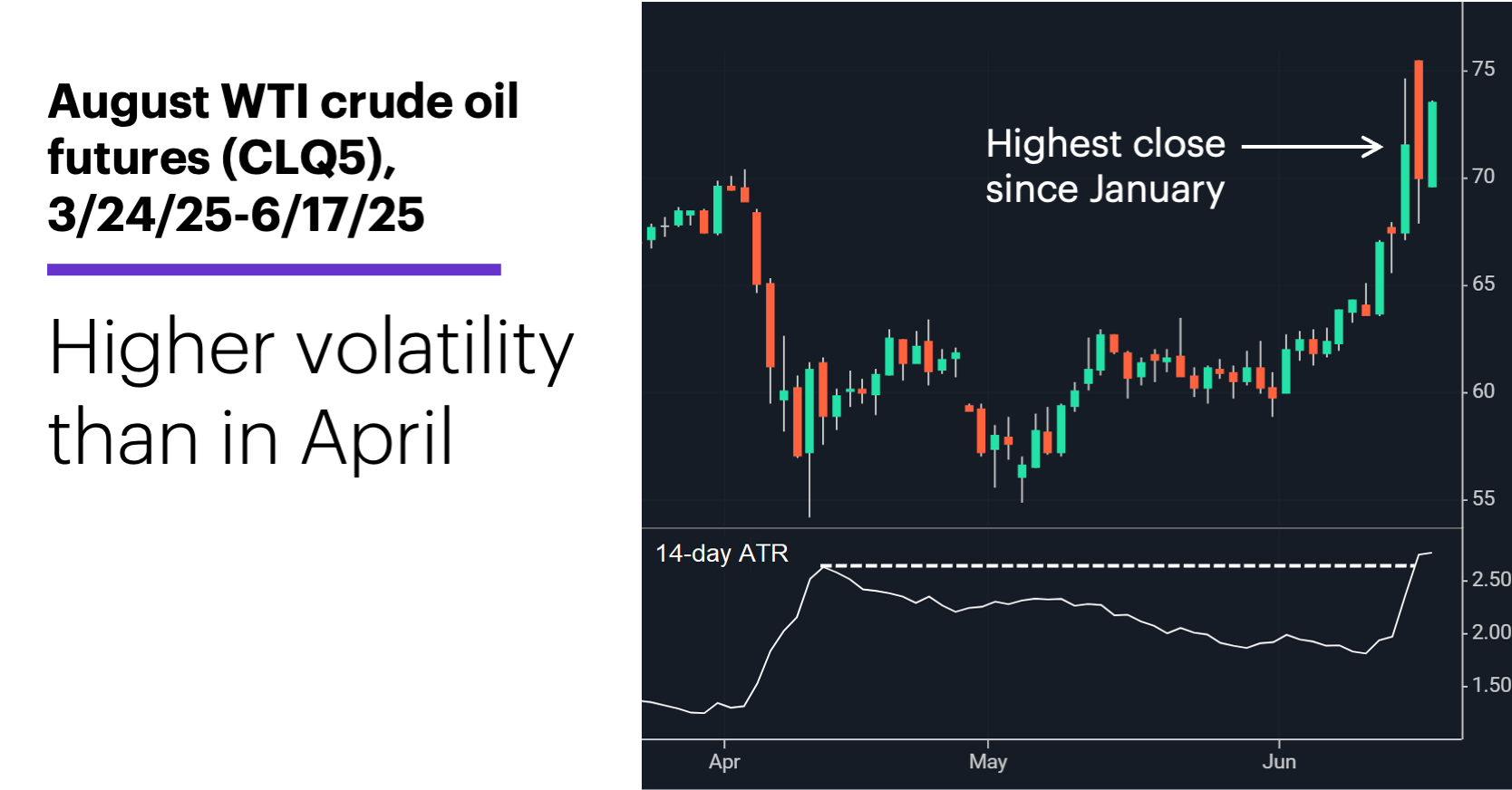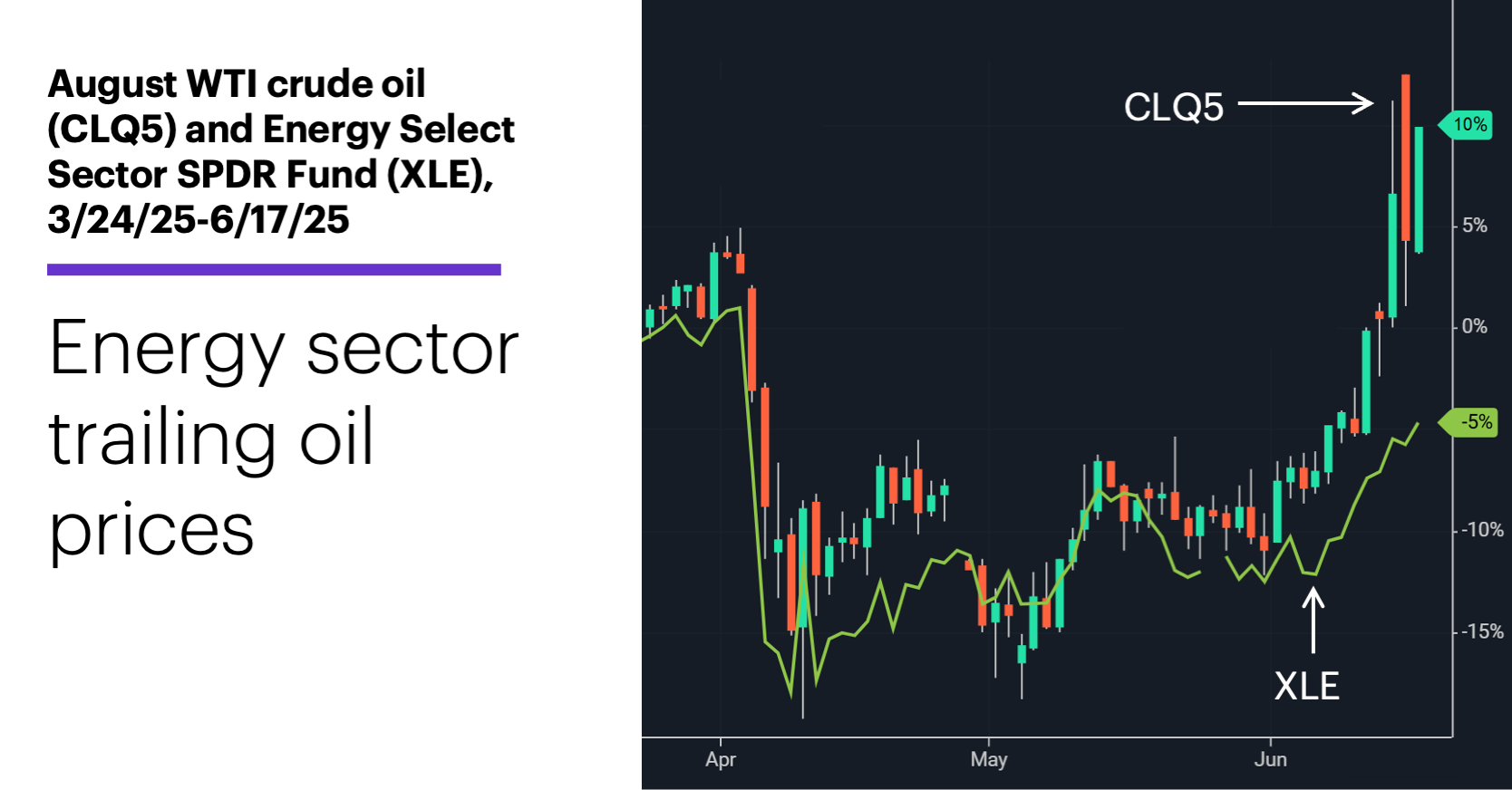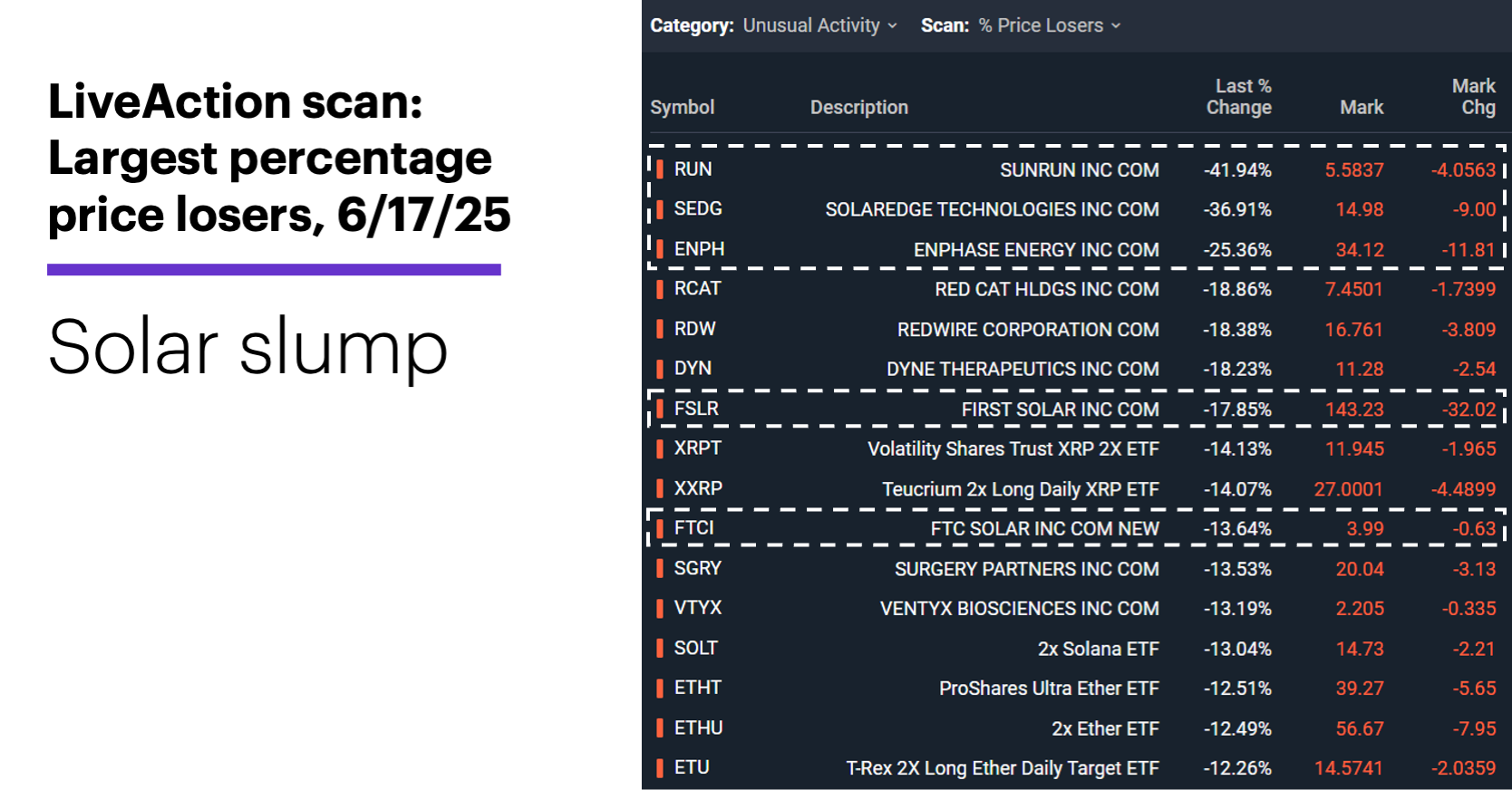Energy deck gets shuffled
- Crude oil trading near year-to-date highs
- Energy sector up, but lagging oil move
- Solar stocks tumble on Senate proposal
While recent geopolitical turmoil in the Middle East has certainly had an impact on the stock market, it pales in comparison to the volatility surge experienced by the oil market.
Over the past three days, August WTI crude oil futures (CLQ5) jumped to their highest level in five months, topping $75 on an intraday basis. Volatility, represented below by the market’s 14-day average true range (ATR), topped the tariff sell-off high from early April:

Source: Power E*TRADE. (For illustrative purposes. Not a recommendation.)
Over the past three days, oil has rallied more than 5%, fallen more than 1.75%, and rallied more than 4%—a three-day level of choppiness it’s exceeded only 21 other times since 1986.
As was the case last Friday, energy stocks were the biggest beneficiary of yesterday’s oil rally—the only positive S&P 500 sector. However, the following chart highlights the reality that while oil and oil stocks typically have a strong positive correlation, they don’t always move in lockstep. For example, over the past three months, the Energy Select Sector SPDR Fund (XLE) and August crude oil futures have tracked each other fairly closely. But there’s a notable discrepancy in their returns during this period because energy stocks haven’t kept pace with the run-up in oil prices over the past few days:

Source: Power E*TRADE. (For illustrative purposes. Not a recommendation.)
And there’s more to this story than the relationship between oil prices and the energy sector. Sustained high oil prices can weigh on the broad stock market because they increase the costs of production and transportation across the economy. In other words, high oil prices can have an inflationary effect far beyond the sting of paying higher prices at the gas pump. And markets are already on heightened inflation alert because of tariffs.
That said, a new report from Morgan Stanley & Co. WTI argued that while oil prices could remain high in the near term, the market is positioned to weaken in the second half of this year, barring a supply disruption.1 So far, that hasn’t happened, although the situation in the Middle East has not been resolved.
A final note: After the 11 other instances of the three-day volatility pattern described earlier, crude oil prices were lower one week later nine times.2
Market Mover Update: Oil wasn’t the only energy story yesterday. Renewable energy stocks dominated Tuesday’s LiveAction scan for largest percentage decliners, as a Senate panel proposed phasing out tax credits for solar and wind energy by 2028:

Source: Power E*TRADE. (For illustrative purposes. Not a recommendation.)
Today’s numbers include (all times ET): mortgage applications (7 a.m.), housing starts and building permits (8:30 a.m.), weekly jobless claims (8:30 a.m.), Atlanta Fed Business Inflation Expectations (10 a.m.), EIA Petroleum Status Report (10:30 a.m.), EIA Natural Gas Report (12 p.m.), Fed interest rate announcement (2 p.m.).
Today’s earnings include (all times ET): GMS (GMS), Kroger (KR).
Click here to log on to your account or learn more about E*TRADE's trading platforms, or follow the Company on Twitter, @ETRADE, for useful trading and investing insights.
1 MorganStanley.com. Navigating Geopolitical Risks & Stronger Oil. 6/17/25.
2 Figures represent spot (cash) crude oil prices, 1986-2025. Supporting document available upon request.